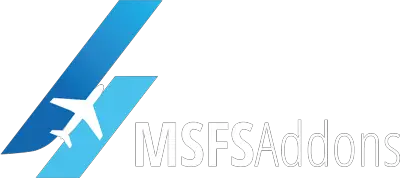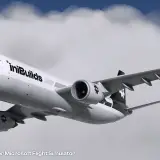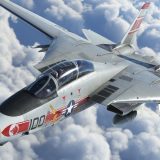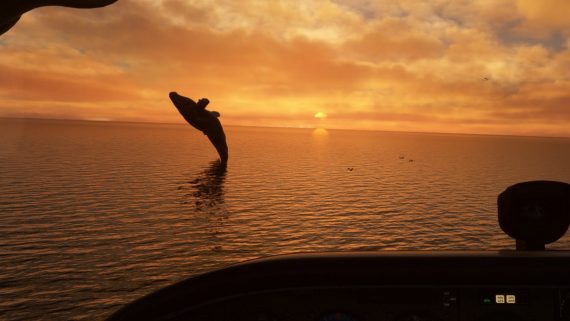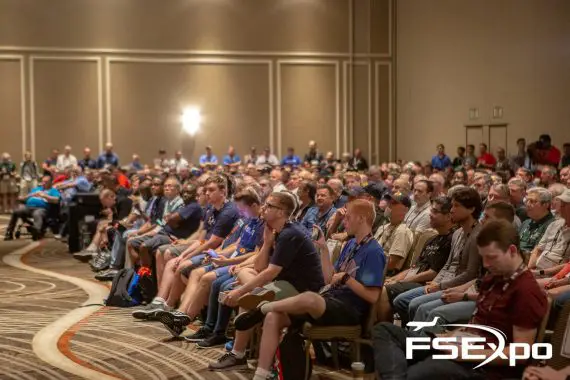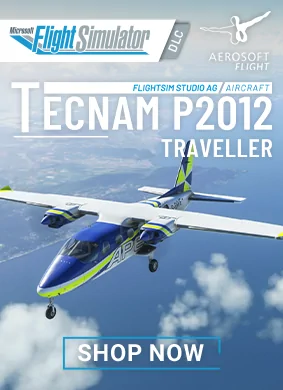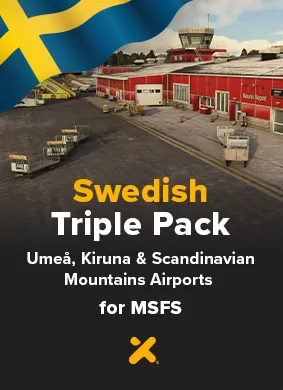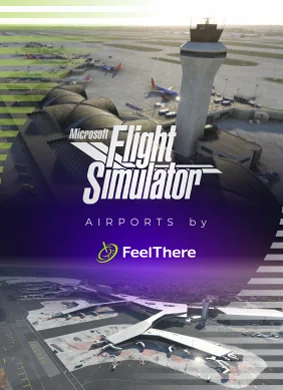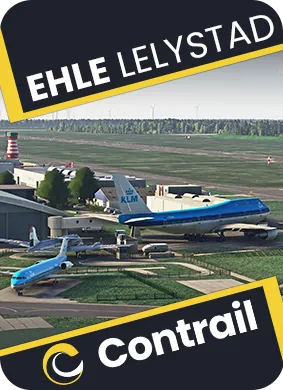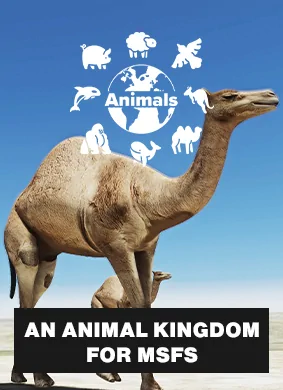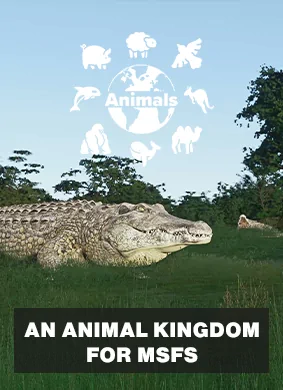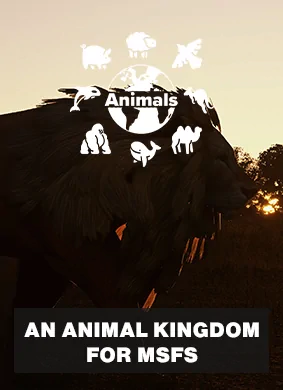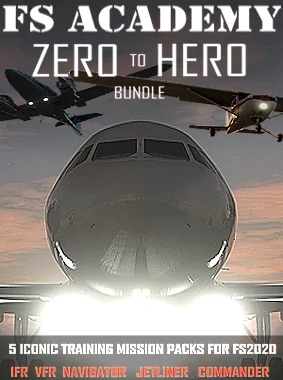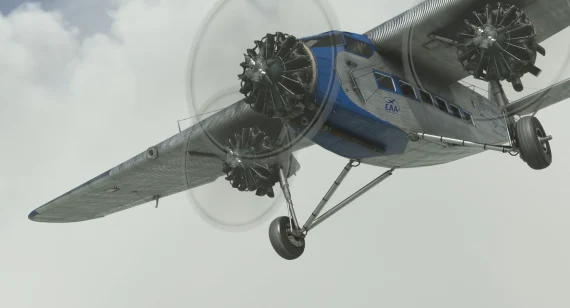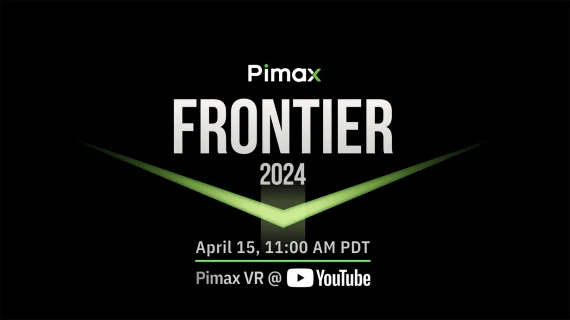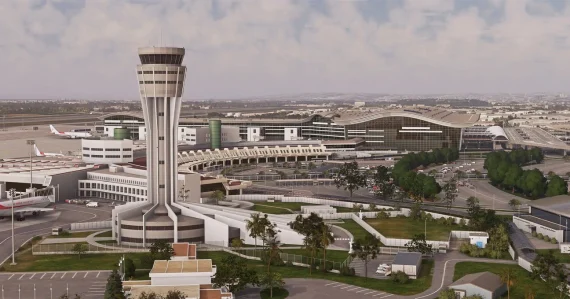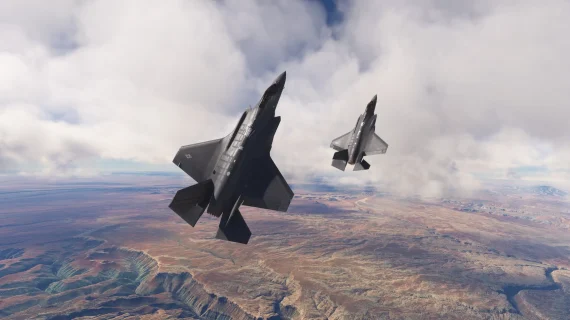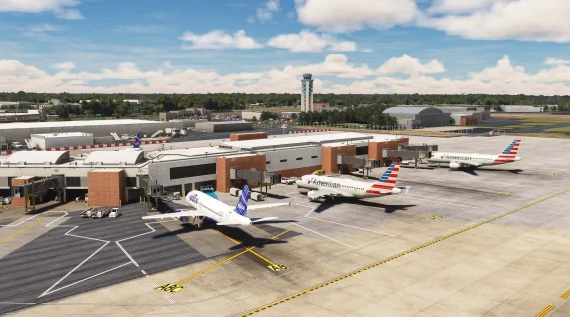Exclusive interview with Jorg Neumann and Sebastian Wloch: “We are in the pursuit of the perfect sim”
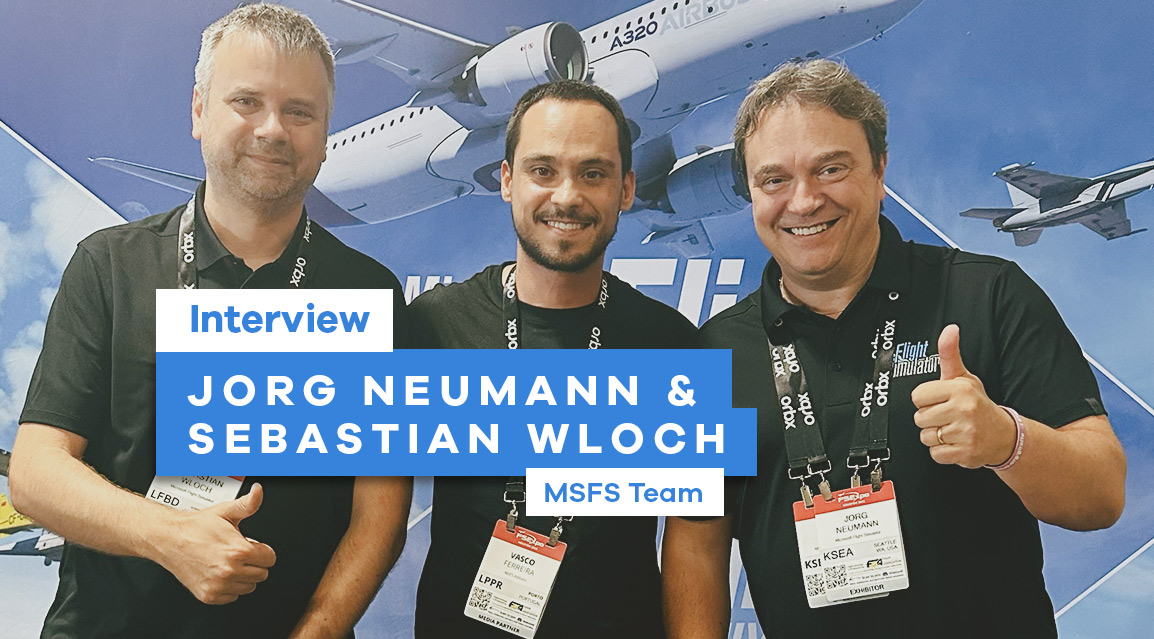
Houston became the world capital of flight simulation this weekend for the vibrant 2023 edition of FlightSimExpo. Amid all the incredible exhibitions and activities, it was an opportunity for enthusiasts to engage with individuals whose work they admire and follow daily. The team behind Microsoft Flight Simulator was there in full force, with renowned members such as Jorg Neumann, Sebastian Wloch, Jayne Ivana, Working Title’s Matt Nischan, and many others freely interacting with the community.
Naturally, this setting provided an ideal opportunity to probe the team’s thoughts on the future of the platform. I had the chance to talk with Jorg and Seb for about 30 minutes and, unsurprisingly, MSFS 2024 emerged as a hot topic. We also delved into the team’s vision for the coming years, marked by an ambitious objective of achieving utmost realism and parity between virtual and real-world aviation. Read on to discover all the details!
Vasco (MSFS Addons): Hi Jorg and Seb! I think it’s your first time here in FSExpo. What are your impressions so far?
Jorg Neumann (Head of Microsoft Flight Simulator): Well, I’ve been making games for 30 years. I used to go to game shows and what’s nice about this is it’s much more relaxed. I mean, you see people hanging out, having longer conversations, and then just the pure optimism of it all. It’s clear that everybody loves airplanes and loves aviation, and I think that love comes through.
It sort of permeates the place, which is quite unique. So I’m super happy to be here. It’s joyful. So many happy people to see, and talk [to] about interesting stuff about aviation, [and] where we can go in the future.
Vasco: What about you, Seb?
Sebastian Wloch (Asobo CEO): It’s my first time here and I really enjoy the place. It’s having all the people who share the same passion, who know what we’re talking about and [are] also knowledgeable about aviation and simulation. I think it feels like home, so it’s really cool.
Vasco: Yesterday you talked about how MSFS has now reached 12 million users. You said there are three million who are casual players and a similar portion who are more hardcore users. How do you balance the needs of each of those audiences?
Jorg: That’s a great question. What we call the customers is the core audience, and we spend most of our time making sure that the core audience is heard and that we are doing what they need from us. So, we collect feedback, we engage in Dev Q&A, we have a lot of systems in place to actually listen, and that’s mostly for the core simmers because they go to our forums and they’re very engaged.
We also look at the behavior of gamers. Gamers are typically taught to do something. In games there are always goals. Simmers are the exact opposite. They actually don’t like goals and set their own goals. They know what they want. I always compare it to a sandbox and the simmers come and they know what they want to do in the sandbox.
Gamers are more used to, “Hey, there are toys and there’s tracks where you should do something.” And they need that. They need a bit more purpose. The nice thing about the situation we are in is, as we were listening, even the core simmer said “Hey, it would be nice to have some stuff beyond what we have right now, beyond free flight.”
We felt like there was a huge agreement, which is why we made that feature number one for the new sim. Everybody wanted more to do, and then for the lots of people that are more casual and actually quite afraid of airplanes, we added things like the Balloon and the Zeppelin and something called the Jetson One, which is a sort of ground vehicle to give people an accessible entry point into flight simulation. It’s not as daunting as saying, “Hey, you have to be in the 152 to 172. You have to go to an airliner.”
We are trying to find the right balance to ensure that the customers are listened to, that we can show the improvements that they want to see, and then also give the others something to do that they may not be as conscious about, but we have heard them and we feel them.
“Everybody wants something realistic. Someone with no experience just wants to be helped, but nobody wants to learn to fly something that’s arcade or completely wrong.”
Sebastian Wloch on the difference between a game and a simulator
Vasco: You said yesterday that MSFS is not a game…
Jorg Neumann: It isn’t.
Vasco: Does that mindset create any kind of boundaries in terms of the decisions that you guys make for the development of new features?
Jorg: Not all the time. There are many dimensions to this question. Should we dumb down anything? And I think the answer is always no. We should provide assistances. But Seb is the right person to answer that.
Sebastian: Yeah, that’s completely true. It’s like when we learn how to fly. Is it better for you when you begin and it’s too hard? Is it better to give you a different version of reality, or is it better to get your reality piece by piece?
When you don’t know how to fly a helicopter, the instructor will give you a piece of reality. It’s a real plane, usually an easy one. He will let you handle the yoke while he takes care of thrust and rudder. And when you are proficient with the yoke, he will give you maybe the thrust and when you’re good with both yoke and thrust, then he will give you the other parts.
What we found out is that it’s very hard to train if you’ve learned with a simplified version of reality. When you’re super good at the wrong version of reality, and then they say, “OK, now that you’re good with the easy version, here’s the real reality,” you have to restart and learn from scratch.
Whether you are a hardcore simmer or just a beginner, you want an honest simulation of flying. You want reality, you want someone to help you, just like an instructor would. That’s why helicopters are really hard to fly, but with assistance it’s super easy, with the right assistance, but it’s exactly the same helicopter.
All the assistance does is to act as if there was an instructor with you. When I flew a helicopter the first time, the instructor had his hand ready to correct me. He gave me just one centimeter of room. And every time I did something wrong, he sort of corrected me.
That’s what the assistance does. It’s the same helicopter, the same yoke, but it’s sort of nudging you a bit to help you in the right direction. I believe that’s the way to go. Everybody wants something realistic. Someone with no experience just wants to be helped, but nobody wants to learn to fly something that’s arcade or completely wrong.
Jorg: You end up teaching people the wrong thing. Another area where we’re equally conscious is aircraft. The goal of both core simmers and casual simmers is to learn. Simming isn’t just about having fun. It’s about learning and achieving mastery. So, we need to stay within the realm of realistic simulation.
When we talk about missions, it’s not like we’re trying to create cool combat missions or something. We’re trying to understand what these people do in the real world and recreate that because some of our simmers aspire to have these careers in the future.
This is the entry point. We’re learning. Like with firefighting, we have to talk to actual companies or organizations that do firefighting in the real world. Otherwise, we could just make a game and we don’t want to do that. Will we get everything right? No, it’s a learning process, like everything else. But the aspiration is to do this if you’re interested in aviation.
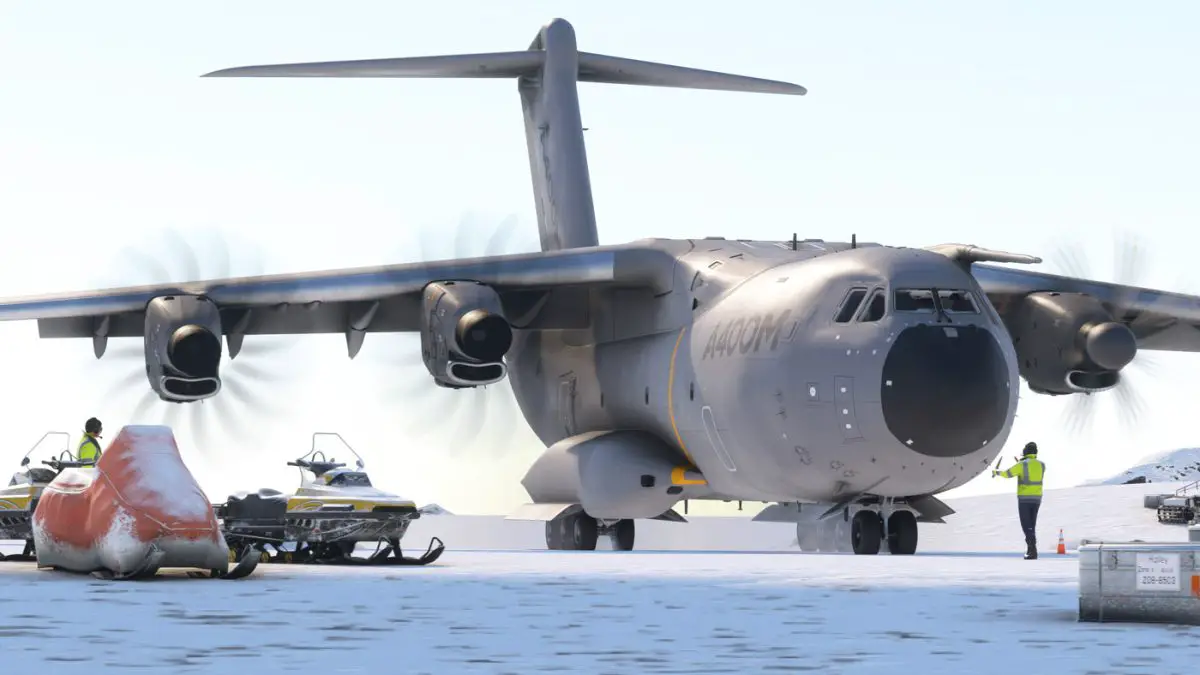
Vasco: With MSFS 2024, with your focus on activities and providing a purpose for the sim, is that also a way to broaden the appeal of the platform? It’s a tricky balance, on one hand, you have to demonstrate that it’s a serious platform with all the complex stuff – the large cockpits, intricate systems – but at the same time, you want to maintain the interest of casual users or those who are curious about aviation but haven’t had the chance to fly in a flight sim, to entice them to engage with the platform.
Jorg: That’s the goal. And you’ll see over the next year, we’re going to talk more and more about what MSFS 2024 really is. The approach we’re taking comes in layers and you can opt into the different layers, which is exactly how your life will be.
Life is just like that. You start by taking a job, like becoming a pilot for an airline, and then where does that take you? Some people end up founding their own company and flying tours around, or whatever it might be. And this is similar.
Another thing that’s important to us is that it’s truly worldwide, where people can opt-in. Back in the day, people made a few missions, say ten in California, and there were no other choices. That’s not what we’re trying to do. We’re embracing the fact that this is a worldwide audience. You have the entire planet and these activities are worldwide.
Sebastian: Something interesting is that I’ve seen the trailer and I had the same experience because of forest fires in Bordeaux. I was driving home and there was the same smoke, and I was thinking, “My house is down there.” Then there were the firefighting planes flying over the highway and I thought, “These people are saving us.” Most people’s experience of aviation is as an airline passenger, but aviation also encompasses these other things. Firefighters can be saving your house. That’s really important. We’re trying to be extremely realistic by talking to people who actually do these things. It’s 100% realistic and we’re trying to cover as many aspects of what aircraft do as possible.
“There’s still some overlap between the two sims, so if we find a crash in MSFS 2024 that’s also in MSFS 2020, we can fix it in both. We’ll continue to support and address any new issues that come up, as they always do.”
Sebastian Wloch on the support that will be offered to MSFS 2020 after the release of MSFS 2024
Vasco: Going a bit further into the future, you’ve talked about Microsoft Flight Simulator being a ten year project. Is it still a ten year project or is it now like a seven year project?
Jorg: I think we’ve just extended it. When we started, we said, “Hey, Microsoft Flight Simulator, we’re going to do this for ten years.” It was not exactly how we stated it, but that’s the idea. The success we’ve had so far enables us to make a full-on sequel with new tech and new content. This just shows how much energy there is in our community and to me, that just means we’re going to keep going.
The team is literally twice as big now as it was and I think that’s all just great news for the hobby. And as some people have asked, we’re not going to stop supporting MSFS 2020. We’ll continue updating it. It won’t have the advantages we talked about earlier, like the changing tech to enable more, but in the context of what 2020 was, we’re going to keep adding to it. This new one broadens it even more. We can do more things and people are always asking us to do more and more. MSFS 2024 is the architecture that allows us to do that.
Vasco: The future tech will evolve on the MSFS 2024 side. What kind of stuff are you guys planning to add to MSFS 2020? To continue with the world updates? What kind of support can we expect?
Jorg: World updates will change a bit. As we showed, how the ground textures are going to work may not be possible in MSFS 2020. However, if we have a photogrammetry city that comes into our world, that should be involved. The same is true for city updates, they will be updated but maybe slightly different. MSFS 2024 goes a bit further on certain things. We’ll keep doing Aircraft and Avionics updates as well as Sim Updates, and evolve it as needed. This could evolve with new hardware releases or something like a new graphics card.
Sebastian: Also, we’ll continue working on bug fixes and crash fixes. There’s still some overlap between the two sims, so if we find a crash in MSFS 2024 that’s also in MSFS 2020, we can fix it in both. We’ll continue to support and address any new issues that come up, as they always do.
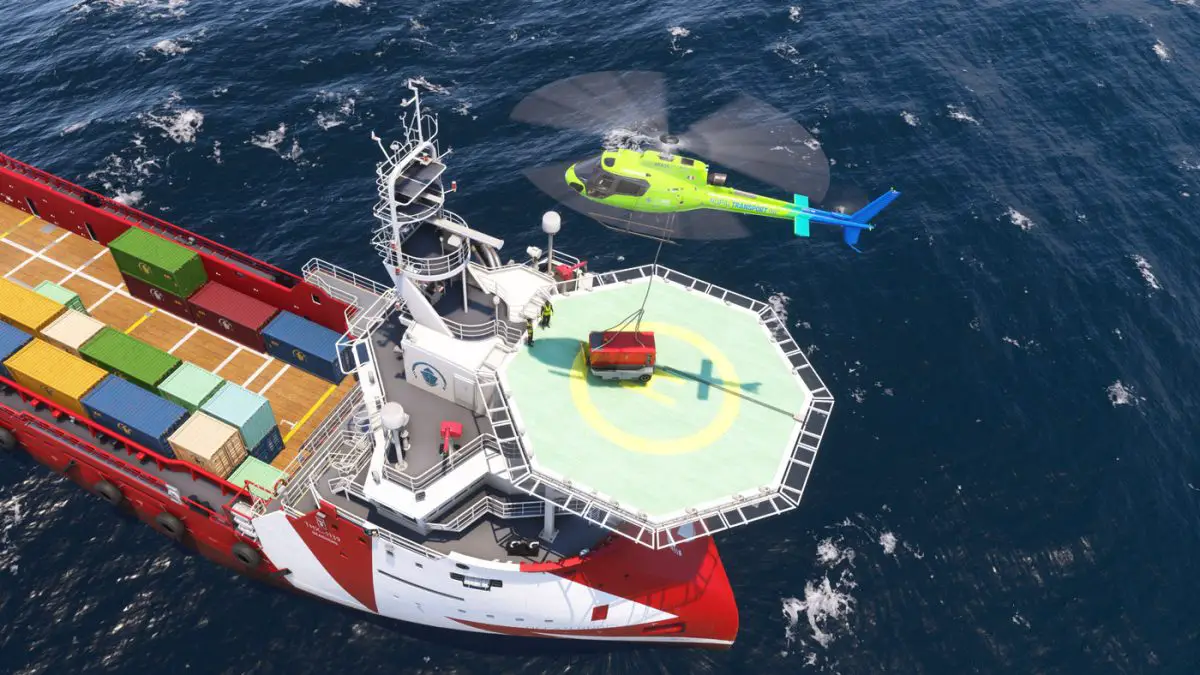
Vasco: Was there always the intention to launch a new standalone versions of MSFS, or is this move motivated by the need for technological growth of the platform?
Jorg: It’s the latter. Technology is unpredictable, and some areas are accelerating much beyond anything we could have predicted. The rise of AI is just the beginning. We’re using machine learning for terrain detection, for example, but we don’t know where it’s going to go over the next five years. So, this move is born out of our analysis of the trend line. There was no preplanning for an MSFS 2024; we didn’t sit there in 2020 saying we’d launch another one in 2024. The acceleration in all areas, and the development of 3,000 add-ons in just a few years, was unexpected. If you extrapolate that, you might end up with 10,000 add-ons. So, our world updates, and many other things, have just evolved in response to these trends.
We’re now at 300GB and at some point we’ll be at 1TB. It’s not feasible. So we need to go [and] we need to do something.
Vasco: As you explained yesterday, the new platform is going to be more cloud-focused and thinner. How is that going to impact users who have a metered connection and have some limits on their internet service?
Sebastian: We moved our content to the cloud and optimized the system. Before, if you had a 4K texture, you needed to download the whole picture into memory, to have the 4K version, the 2K version, etc. This is to allow the GPU to be efficient – when something is too far, if you don’t need 4K, you take a lower version. The new engine can now only stream what is needed, which is usually a lot smaller.
If you only need a 2K version of the texture, it’s three times smaller than the 4K version with all the bitmaps, and this is much more efficient. Users are going to get an advantage compared to before. For example, we’re going to add a lot more content and missions for the airports and increase variety. If we did this in MSFS 2020, it would just bloat the simulator, make it bigger and slower to load. But in MSFS 2024, the architecture means you’re only going to load what you need. It won’t require more memory to download than if you’re flying over your city. So, it will be more efficient for the user.
Jorg: So even with more stuff, it might actually end up being less bandwidth, which is great.
Vasco: So, if I’m based in Europe and I never fly in Asia, for example, will the system offload the Asian textures and only load them when needed?
Jorg: Exactly, it’s really just what you need for your experience. It’s much more customized. Right now, we’re streaming everything, but with this new system, it will be based on your behavior and what you’re interested in.
Sebastian: Just look at the biomes and all the tree varieties. We’re doing hundreds of species of trees. Without streaming these, you would have to put them on your hard drive, which would take so much more memory. This enables us to do more, better, with more variety and quality.
“I pay attention and ask our Marketplace team to reach out to all the plane developers and ask them to share their roadmap with me so I know what they’re working on, with the intent to stay clear if there’s an overlap. The A380 from FlyByWire is a good example: we’re not going to make an A380 because they’re making one.”
Jorg Neumann
Vasco: Talking about other future features, like, for example, improvements to the ATC. You didn’t mention anything about that.
Jorg: We did not.
Vasco: You did not (laughs). Is there anything planned?
Jorg: Maybe. Maybe so. We only talked about a fraction of what we are making. But, you know, to some degree this is going to be the fun we’ll have over the next year, talking about all the other things we haven’t talked about. We heard everybody and we’re paying a lot of attention to the people and what they want. There’s lots of positive news coming.
Vasco: What about the shared cockpit for example, could that also be a new thing?
Jorg: You know your stuff! We capture the feedback snapshot, we talk about it all the time and we try to do as much as we can. And by the way, MSFS 2024 is also not a one and done thing, we’re going to keep working on that.
For us, it’s really just prioritization of work. All that customizing to the individual enables us to do more, which is fundamentally what we want. We want people to have more and to have the stuff that’s relevant to them. The architectural change does that. Beyond that, there’s a huge long list of features we will always try.
We try to prioritize these things. We listen carefully to what the community’s priorities are. We do as much as we can, and if we can’t get it all done, we’ll do it six months later, a year later, who cares? But fundamentally, we are determined to listen and we are in the pursuit of the perfect sim, right? So at some point or another, it’s over.
It’s joyful when we say in the feedback snapshot that we did this, we did that. Yep, that’s done. That’s done too. And we’re going to continue doing that.
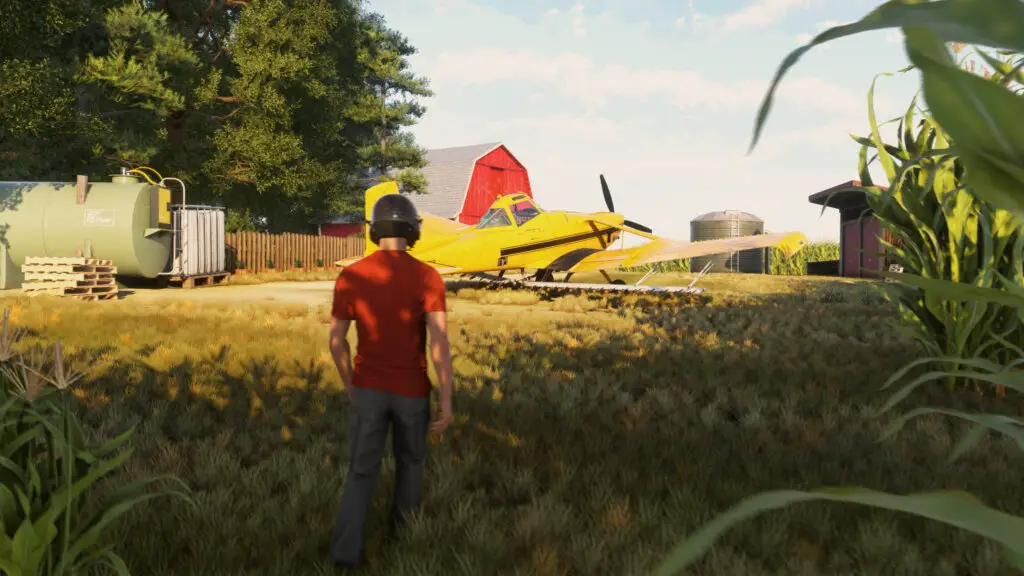
Vasco: How do you balance the risk of “sherlocking” developers when introducing new base features in the platform that have also been worked on by third parties? For example, the planned improvements for AI traffic or the introduction of more animals, which is something other devs have done.
Jorg: I mean, that’s the nature of an open platform. I pay attention and ask our Marketplace team to reach out to all the plane developers and ask them to share their roadmap with me so I know what they’re working on, with the intent to stay clear if there’s an overlap. The A380 from FlyByWire is a good example: we’re not going to make an A380 because they’re making one. A lot of the planes that we’re making are historical planes. There’s not much overlap there.
In MSFS 2024, there’s a new set of aircraft coming in. It’s not possible to avoid all overlap, but if there is, I engage with the team that has done something similar and see if we could work something out. Sometimes there are elements, like camera systems, where there could be collaboration.
Many of the planes we’re making now are made by third parties and that’s working great. Airports, the same thing. The Asobo team can focus on the platform while we make airports with Gaya, Orbx, NZ Simulations.
Now, we need to look at things that are a little more interesting. Let’s call it the guts of the system. We need to be careful. This needs to be maintained for a long period of time, and we need to be comfortable that any collaboration is maintainable, otherwise it could potentially harm the platform. An area where we have taken this approach is with Working Title. They are making avionics and improving our base sim, and our confidence in them is high.
That means Asobo can work on other things, very specific things. There are some features where people are doing interesting stuff and we’ll look at it on a case-by-case basis. If there is a collaboration possibility, how is it maintained? How can we support the platform long term? Every piece of code in the platform needs to be supported. I think that’ll be the determinant if we can collaborate with someone.
Vasco: One thing that particularly excited me was when you talked about simulating wear and tear in the upcoming version of MSFS. Can you share more details about that?
Sebastian: There’s an interactive visual component. Like if you land on a dust surface, you get all dusty. And it works hand-in-hand with the activities.
If you break the plane, you don’t do as well. If you do all the procedures, pay attention to RPMs, avoid hard landings, you don’t break the aircraft. This is now integrated. There’s also failures [and] it depends a lot on the aircraft. There can be failures on different systems and this is also integrated with the activities.
If you do the checklist, as you should, you will avoid a failure. If you skip the checklists, this may generate a failure. That’s why checklists are there, right? It brings a meaning to following checklists.
Vasco: So can we expect a more realistic engine simulation, where the user has to pay attention to temperatures, etc?
Sebastian: Yes, that’s kind of it.
Jorg: If you’re overstressing the engine, it can catch fire. Some people have done that already. If you don’t pay attention to the oil levels, you can have a fire. It’s directly related to the activity system and simulating real life. You can own your own aircraft, at which point it’s like owning a taxi. You have to service your own taxi. You have to check the oil and make sure everything is in order. You can also choose to work for someone else and just take a job, at which point the company takes care of it. That’s the whole point of this, right? Let’s make it as real as we possibly can.
Vasco: So it’s sort of like a career mode?
Jorg: It’s exactly that. We’ll talk about that more in-depth at a later point in time because it’s a very wide field, but our attempt is to be as close to what is possible in the real world. So if you can imagine how a career in aviation can go in the real world, it’s similar for us. It’s how people found their own companies and stuff like that.
Vasco: It’s that idea of finding a purpose…
Jorg: Exactly. I always said I wanted to run a helicopter company in Hawaii flying tourists. Well, you know, I want to do something in New Zealand and you can do that.
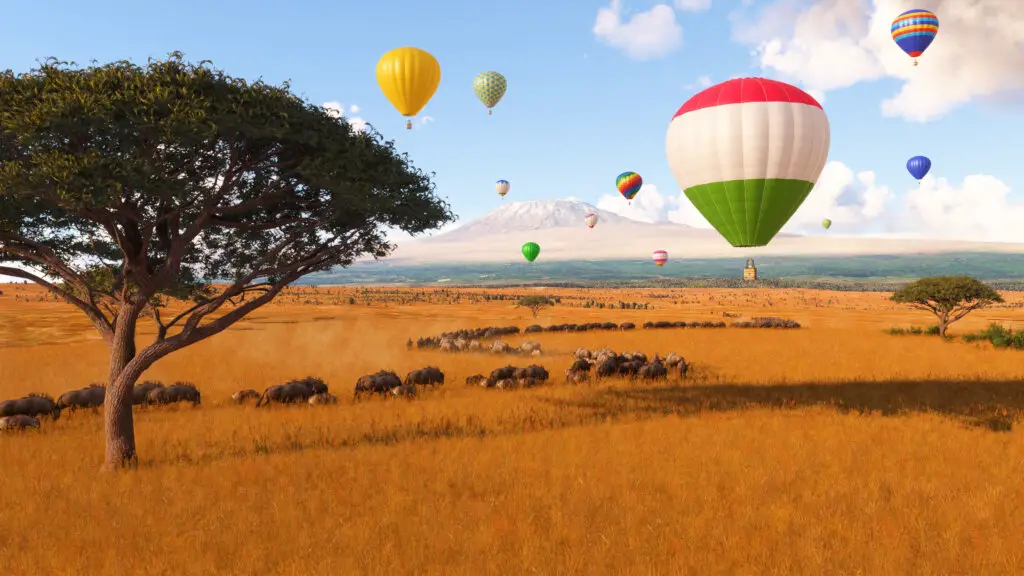
Vasco: What can users who purchased Premium Deluxe or Deluxe expect? Will the aircraft they received as part of their purchase, for example, the 787-10, be carried over?
Jorg: Yep!
Vasco: And is there any upgrade path for those users, for example with a possible discount?
Jorg: I don’t know yet but once people realize just how much is in MSFS 2024, I think they’ll realize it’s a full-price product. Fundamentally, the planes that you already have are going to come over here and to a significant degree, upgraded.
Vasco: So, you are around a year away from releasing this, is that about right?
Jorg: We have to fly it. That’s sort of the next steps. The SDK has to be released and we have some target dates, but it’s ready when it’s ready. We’re going to ship it out to the developer community as soon as we can.
Some people ask, why did we announce it so early? Well, it’s all relative. As a platform, you have some responsibility to the people that work on the platform. We wanted to give a heads up, “Hey, something new is coming”, and the next step is the tools. It gives them enough time to adjust whatever they want to make adjustments, but they don’t need to adjust anything if they don’t want to. If they want to take advantage of some of the new systems, there’s some work and we give them enough time to do the work.
Then we’ll go in and alpha and beta. We’ll get input from simmers and make sure that the thing is ready to go before we lock in a ship date. We always have a ship date target. But it’s software development. The reality is you have to keep your head a little bit flexible on these things and seeking feedback is key, actually.
Vasco: What about beyond 2024? What’s the outlook for all the years to come?
Jorg: The world will continue to get more attractive, and more accurate simply because the capabilities we have to capture the world are increasing all the time. There’s a reality that people shoot up satellites all the time and all that data can be gathered. Machine learning will improve to a degree that is very unpredictable. As for air traffic and things like that, there are things to be looked at over time.
What do we really need to improve still? For example, I’m fascinated by what happens once the plane lands at the airport. We have FlightAware to track it all the way until it hits the ground. Once it hits the ground, we actually kind of don’t know. There’s no data shared about ground traffic at every airport. Which gate is it going to go to? We don’t know. So that is something where we might increase the input we get from individual airports, at least the major ones, to make that be more accurate.
And there are a lot of other things that I find fascinating. For example, the concept of animal population is something that can go all kinds of places. We talk about whether we want to do migrations that are seasonal and all sorts of things.
As far as experiences, I’m interested in making it more social. What does that look like? There are flying clubs in the world, how do we mimic that more? How do we encourage more people to fly together? We have the world as our platform and we can do a ton.
Sebastian: Technology is going to continue to evolve, performance is increasing, graphics capabilities are increasing. The world is going to look, feel, and behave more and more realistically. It’s going to be difficult to differentiate between photo and reality, and it’s going to feel better and better.
Jorg: In MSFS 2020, even though some screenshots look remarkably close to Earth, you could still tell certain things. Like, the underground of the plane is green or whatnot. But now we look at some screenshots and think, is this a screenshot or what is this? It’s going to get more and more realistic.
Aviation is also changing. When we talk to people in the aviation industry, it’s all about sustainability. It’s the number one topic in aircraft these days. We talk to airlines or manufacturers that differentiate themselves, how do we track sustainability, meaning let’s use less fuel, fly smarter, turn off an engine while you cross the Atlantic. These are things people do in the real world that they are passionate about.
When you talk to pilots, they’re like, you got to do this. This is a key thing in aviation. And we haven’t even touched that yet. And obviously, sustainability is a big topic for all of us, and I think we’ll be on that journey. There’s more innovation in aviation than it’s been in a long time. Like, electric engines are coming more and more. I guess you’ll see some stuff like we haven’t announced it yet, but we’re doing some things like that. I’m looking forward to keeping on the cutting edge of what aircraft actually do in the real world.
Lead interviewer: Vasco Ferreira
Producer: Henry Jones
